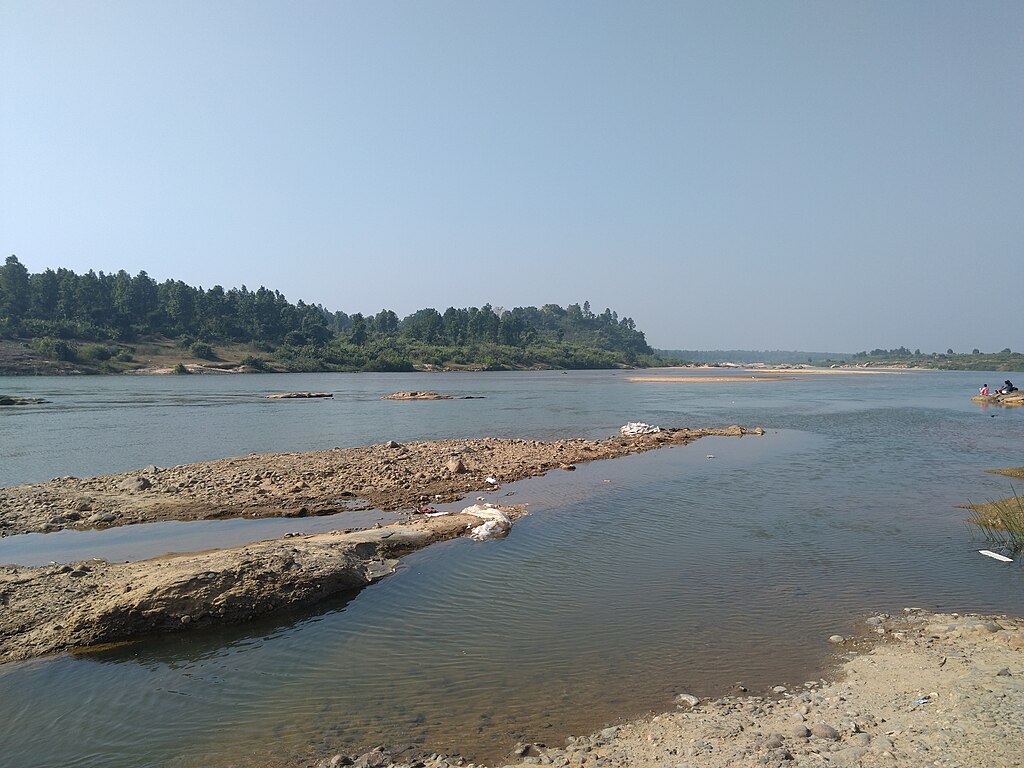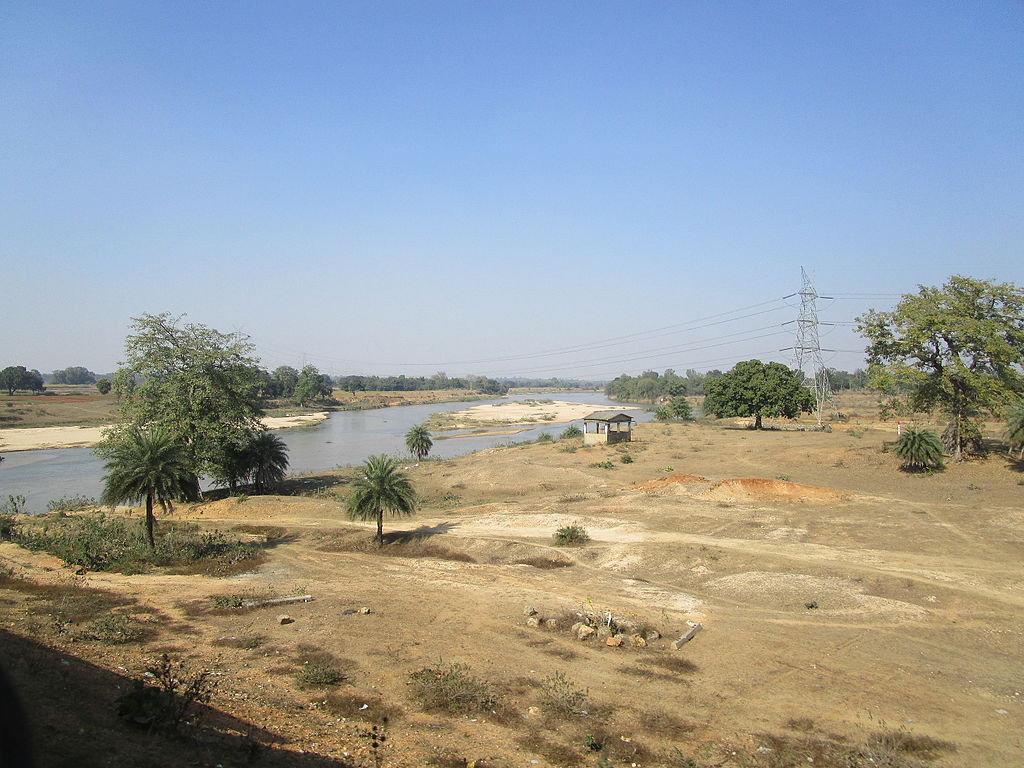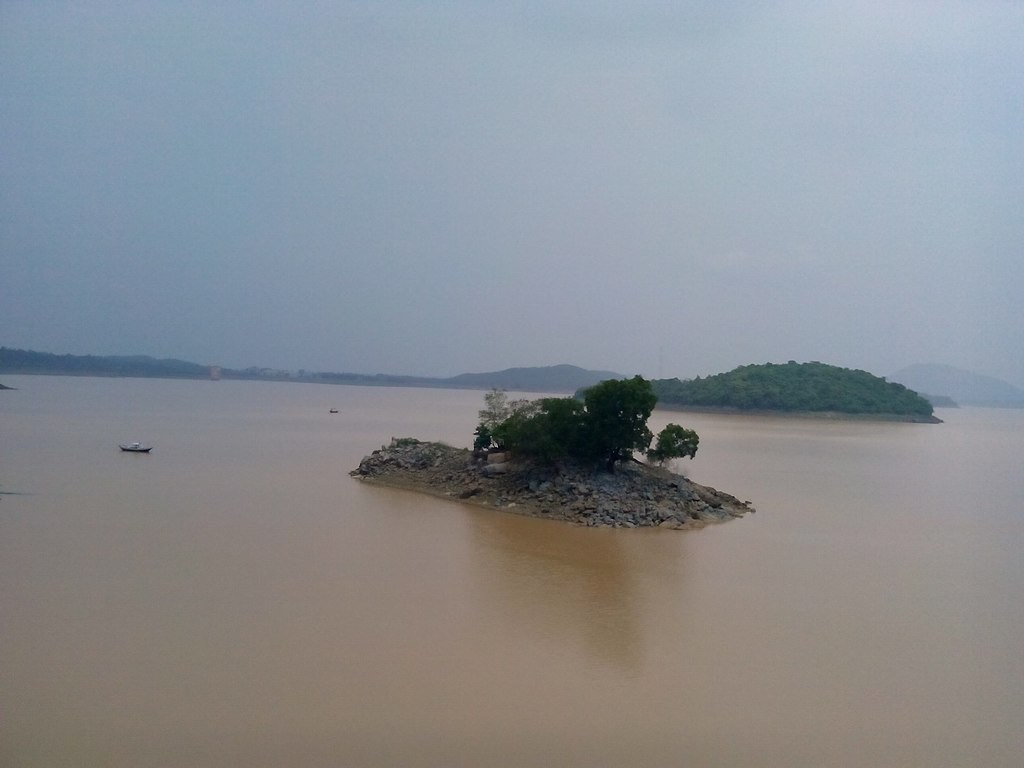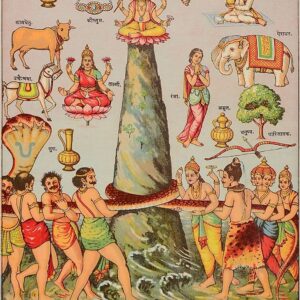The Barakar River is the main tributary of the Damodar River in eastern India. Originating near Padma in Hazaribagh district of Jharkhand it flows for 225 kilometres (140 mi) across the northern part of the Chota Nagpur Plateau, mostly in a west to east direction, before joining the Damodar near Dishergarh in Asansol, Bardhaman district of West Bengal. It has a catchment area of 6,159 square kilometres (2,378 sq mi). The main tributaries, Barsoti and Usri, flow in from the south and north respectively. Apart from the two main tributaries some fifteen medium or small streams join it.
The Barakar skirts the northern portion of Parasnath Hills, 1,350 metres (4,430 ft) above sea level, the highest hill in the region, located in Giridih district of Jharkhand and a centre of Jain pilgrimage.
Floods
Barakar River at Barakar, Asansol, Bardhaman district
Barakar River at Bandarkupi in Jharkhand
Barakar River Railway Bridge in 2023
The river flows in all fury during the rains in its upper reaches and has washed away two bridges constructed successively on the Grand Trunk Road. The great stone bridge across the river near Barhi, in Hazaribagh district, built around 1848, was washed away in 1913, after a fall of 250 millimetres (10 in) of rain in 24 hours. The narrow iron bridge, which was built to replace it, withstood the strains of troop movement during the Second World War, but gave way in 1946, with another great flood. A new bridge built in the 1950s has withstood the fury of the river.
There is another bridge on the Grand Trunk Road, across the Barakar, connecting Barakar a neighbourhood in Asansol having the same name, in Bardhaman district of West Bengal with Chirkunda in Jharkhand. With heavy traffic in the heart of the coal belt, the bridge built in the mid-19th century is in need of repairs. A new bridge has been built, to the north, on the bypass running from Kalipahari in Asansol to Nirsa in Dhanbad district.
The huge volume of monsoon water was carried down the valley and formerly created havoc with floods in the lower Damodar basin. Annual rainfall over the basin varies between 765 and 1,607 millimetres (30.1 and 63.3 in) with an average of 1,200 millimetres (47 in) of which 80 percent occurs during the monsoon season from June to September.[3] In order to harness the river (along with the Damodar), the Damodar Valley Corporation (DVC) planned and implemented independent India’s first multipurpose river valley project. The first dam of the project was constructed across the Barakar at Tilayia.
West Bengal

















Reviews
There are no reviews yet